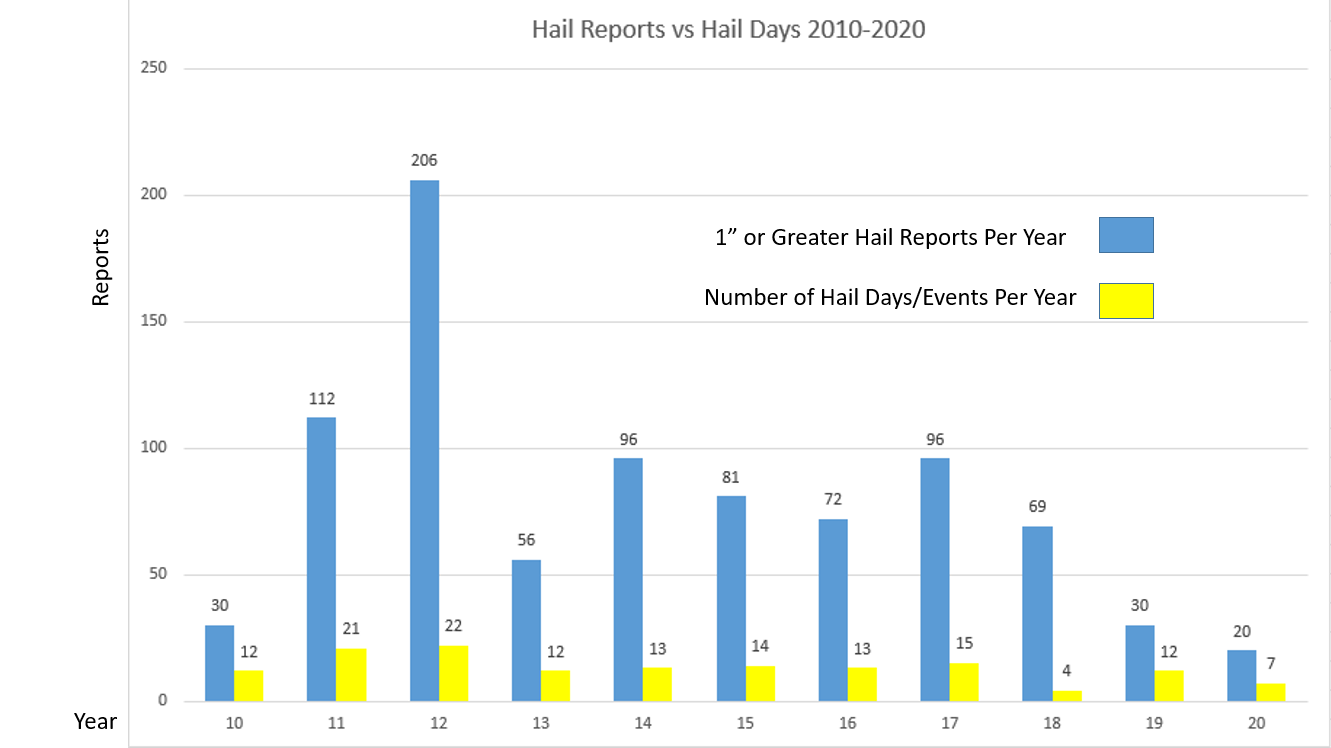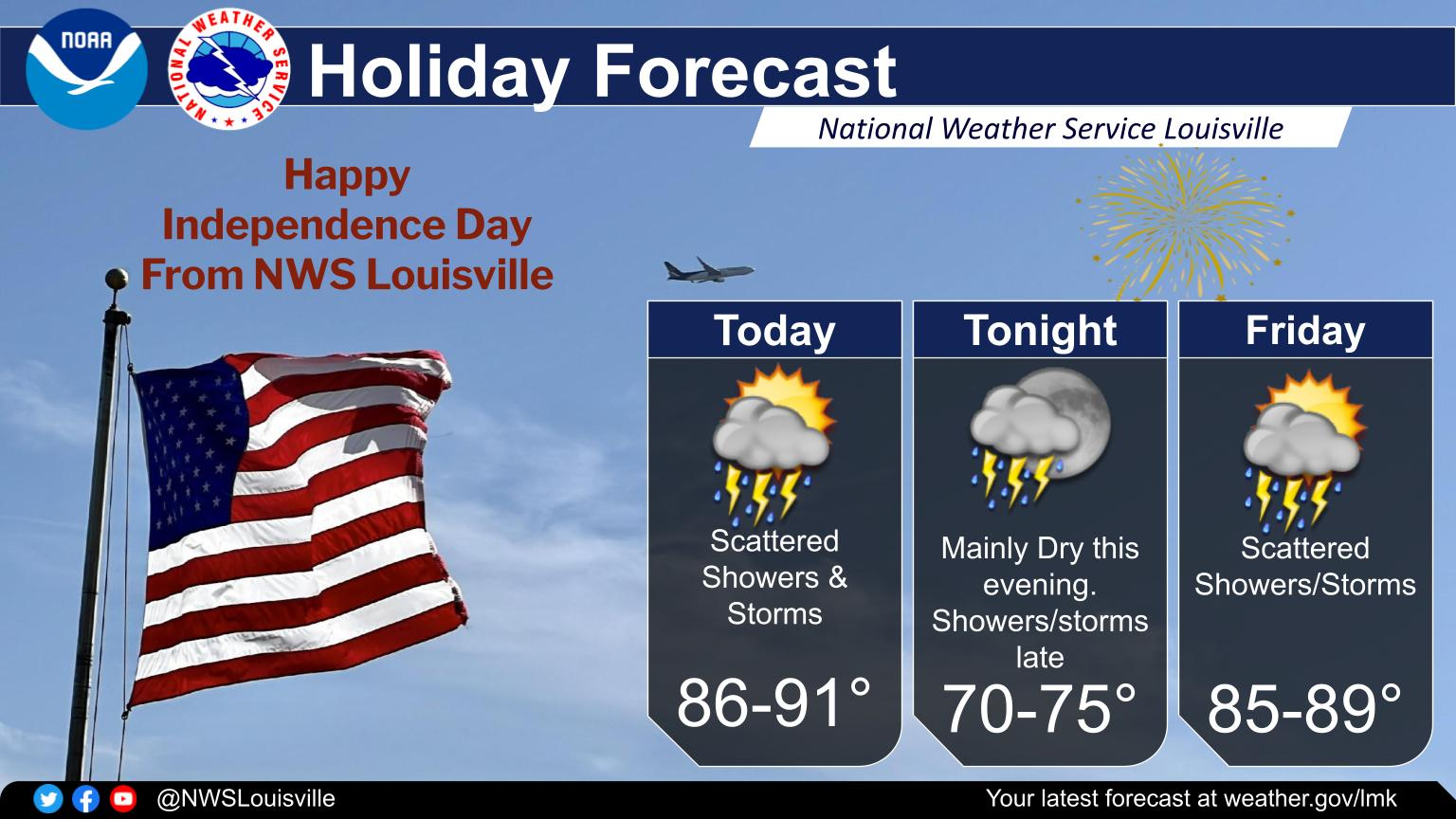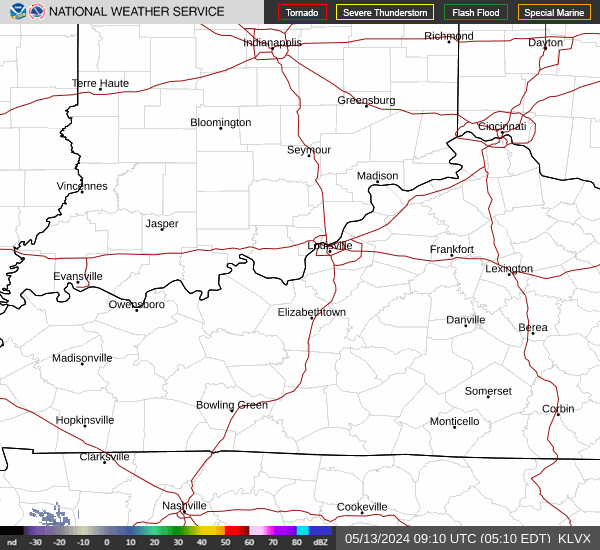Louisville, KY
Weather Forecast Office
Have we seen a Hail Drought this year?
So far, 2020 has been a wet year! The Louisville and Bowling Green climate sites are both almost 10" above normal for precipitation through September 15th. Additionally, the Lexington climate site is almost 5" above normal. A big contributor to the high rainfall totals has been an abundance of slow moving thunderstorms developing in abnormally moist environments. It's pretty clear the slow moving storms producing heavy rainfall have caused precipitation totals to add up this summer.
One interesting byproduct of the wet summer has been a bit of a "hail drought" across southern Indiana and central Kentucky. So far in 2020, the NWS Louisville office has seen the fewest amount of 1" or greater hail reports since 2009. Also, we have seen about half the usual amount of hail days/events than a more typical year. You might be asking yourself, why would a wet atmosphere cause less hail? It's a good question, and there are many reasons why this occurs.
The first reason is that in many cases, a moist or near tropical air mass isn't quite as unstable as a typical thunderstorm air mass. In other words, thunderstorm updrafts aren't as strong, and the weaker updrafts can't hold hailstones up long enough to grow. Another reason is that moist air masses are typically warmer in the mid levels of the atmosphere than drier air masses. Therefore, a hailstone is more likely to melt faster and grow slower in a more moist thunderstorm air mass. Some of your best large hail days have very cold and dry air in the mid levels! Overall, a hail stone will melt the fastest if it is small and in a rain shaft. In contrast, a large hail stone that is falling outside of a heavy rain shaft will melt much slower.
If you want to learn more about hail, check out this website. Thunderstorm Hazards - Hail
Given how wet we've been this year, it might now be easier to understand why we've seen less hail this year! Above is a graph showing the amount of 1" or greater hail reports from 2010 to present in 2020. In addition, you can see the amount of hail days/events each year. Note that 2020 does seem to be experiencing a bit of a hail drought so far in 2020.
Current Hazards
Hazardous Weather Outlook
Storm Prediction Center
Submit a Storm Report
Advisory/Warning Criteria
Radar
Fort Knox
Evansville
Fort Campbell
Nashville
Jackson
Wilmington
Latest Forecasts
El Nino and La Nina
Climate Prediction
Central U.S. Weather Stories
1-Stop Winter Forecast
Aviation
Spot Request
Air Quality
Fire Weather
Recreation Forecasts
1-Stop Drought
Event Ready
1-Stop Severe Forecast
Past Weather
Climate Graphs
1-Stop Climate
CoCoRaHS
Local Climate Pages
Tornado History
Past Derby/Oaks/Thunder Weather
Football Weather
Local Information
About the NWS
Forecast Discussion
Items of Interest
Spotter Training
Regional Weather Map
Decision Support Page
Text Products
Science and Technology
Outreach
LMK Warning Area
About Our Office
Station History
Hazardous Weather Outlook
Local Climate Page
Tornado Machine Plans
Weather Enterprise Resources
US Dept of Commerce
National Oceanic and Atmospheric Administration
National Weather Service
Louisville, KY
6201 Theiler Lane
Louisville, KY 40229-1476
502-969-8842
Comments? Questions? Please Contact Us.



 Weather Story
Weather Story Weather Map
Weather Map Local Radar
Local Radar